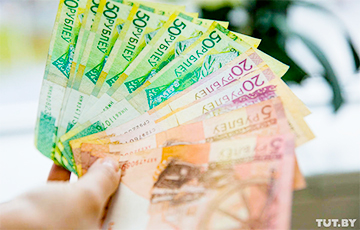What Will Happen To Prices, Refinance Rate In Belarus?
2- 5.05.2021, 14:40
- 4,260

An expert opinion.
What growth in consumer prices can be expected in Belarus in the near future and by the end of the year? Will the refinancing rate change and, if so, in which direction?
Financial consultant Mikhail Hrachou expressed his opinion on this in a comment to Myfin.by. Impoprtant to note, the refinancing rate was raised on April 21 to 8.5%. In March 2021, the annual increase in consumer prices was 8.5%.
About the rise in prices
- In the first quarter, inflation increased significantly in comparison with last year and the level that was determined by the government in terms of forecast. As the National Bank of Belarus pointed out in the comments to the statistical data for March and the first quarter, the influence of both external and internal factors affected here. Among the external factors, one can single out the increase in food prices all over the world, and internal factors - the growth of administratively regulated prices and tariffs.
In the second quarter, the rise in food prices may be somewhat reduced. The spring-summer period is coming, seasonal goods are on the shelves, and this, to some extent, leads to a decrease in the cost of the food basket. So the seasonality factor will have some influence on inflation indicators - towards the cheaper food basket.
But there are other goods as well. Thus, we see, in particular, that retail prices for motor fuel are growing. Another increase in the price of 1 kapeyka occurred on May 4, and this is already the 13th rise in price in 2021. So, a pretty penny to a pretty penny, the price of gasoline has grown significantly. And it is difficult to understand when Belneftekhim will pause these increases for a pretty penny. Because due to the sanctions expectations, there is a possibility that the supply of crude oil to our refineries may be limited in May. In addition, since June, some tariffs for housing and communal services are planned to increase, for example, subsidized tariffs for central heating and water heating, and gas tariffs.
The combination of these factors in the second quarter may keep inflation at the level that has developed today - 8.5% on an annualized basis. Maybe in May inflation will go down a little - to 8.2-8.3%. But it is unlikely that it will be below 8% in May and in general at the end of the second quarter.
In the future, the National Bank expects that these factors will reduce their impact on inflation. But the regulator is far from expecting less than 7% inflation by the end of the year. That is, the forecast figure of 5.5% has been put aside.
Will the refinancing rate change?
- The last increase of the refinancing rate on April 21 to 8.5% brought the financial system to a neutral state. That is, the refinancing rate is currently neutral. In the conditions that are taking shape in terms of inflation indicators, there is no reason for the National Bank to lower or increase the current rate.
So, with a high degree of probability, in the next six months, and possibly until the end of the year, the refinancing rate will remain at the same level. If a change does occur, then within the minimum values - perhaps by 0.25%, and this is permissible both in one direction and the other, if the situation worsens. Because value for money is the ideal solution. In fact, there is a shortage of liquidity inside the country. This can be seen from the statistical bulletin of April 30, published by the National Bank. In particular, the broad money indicator shows that the amount of money in the economy is decreasing.









